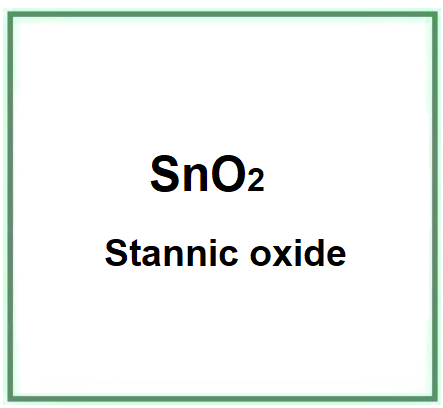CI 77861 or Tin oxide is an inorganic chemical compound also known as stannic oxide.
Breakdown of the name and function of the components
- CI - This stands for "Color Index", which is an international naming system for dyes and pigments.
- 77861 - This is the specific number assigned to tin oxide in the Color Index.
Description and function of the raw materials used in production
- Tin minerals - They are the primary source of tin. Cassiterite (SnO2) is the most significant tin mineral.
- Oxygen - Used in forming the oxide when tin is exposed to it.
Summary of its industrial synthesis process step by step
- Extraction - Tin is extracted from its minerals, primarily from cassiterite, through a reduction process.
- Oxidation - The pure metallic tin is exposed to oxygen or an oxidizing agent under controlled conditions to form tin oxide.
- Purification - The produced tin oxide is then purified to remove impurities and other contaminants.
- Drying and Milling - The tin oxide is dried and can be further milled to achieve the desired particle sizes.
It appears as a white or grayish powder and has a crystalline structure.

What it is for and where
Cosmetics
Abrasive agent. It contains abrasive particles to remove stains or biofilm that accumulate on the stratum corneum or teeth. Baking soda, kieselguhr, silica and many others have abrasive properties. Peeling or exfoliating products used in dermatology or cosmetic applications contain abrasive agents in the form of synthetic microspheres, however these microspheres or abrasive particles are not biodegradable and create pollution in aquatic ecosystems.
Bulking agent. It regulates the water content, dilutes other solids, can increase the volume of a product for better flow, acts as a buffer against organic acids, helps to keep the pH of the mixture within a certain level.
Opacifying agent. It is useful into formulations that may be translucent or transparent to make them opaque and less permeable to light.
Viscosity control agent. It controls and adapts, Increasing or decreasing, viscosity to the required level for optimal chemical and physical stability of the product and dosage in gels, suspensions, emulsions, solutions.

- Molecular Formula SnO2
- Molecular Weight 150.71 g/mol
- CAS 18282-10-5
- UNII KM7N50LOS6
- EC Number 242-159-0
![]() CI 77861
CI 77861 



